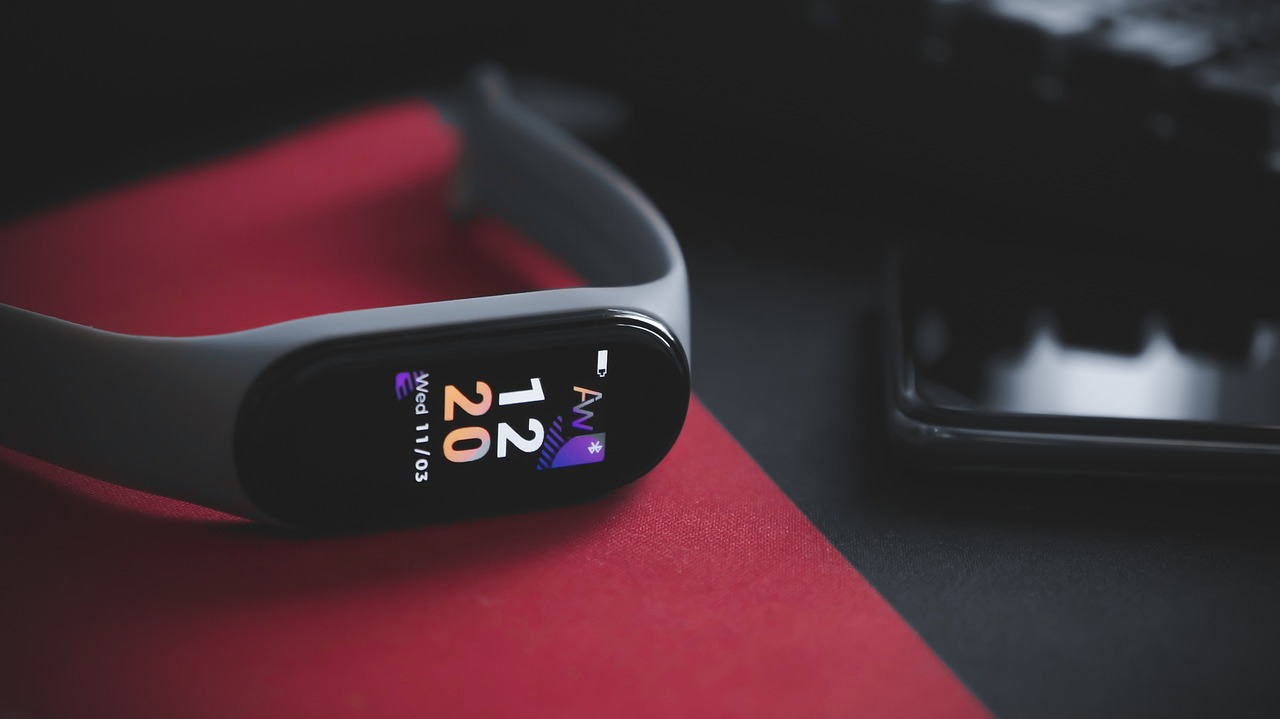The Future of Wearable Tech
Beyond the Wristwatch
Wearable technology has already become a familiar part of daily life for many. Smartwatches track our steps and heart rates, wireless earbuds provide soundtracks to our commutes, and fitness bands nudge us towards healthier habits. These devices represent the first wave, the initial steps into integrating technology directly onto our bodies. Looking ahead the potential applications and forms of wearable tech expand dramatically, promising to reshape how we interact with information, manage our health, and experience the world around us. It’s less about strapping a computer to your wrist and more about weaving computational power seamlessly into the fabric of our existence. The evolution points towards devices becoming smaller, more integrated, and capable of gathering far richer data about ourselves and our environment.
A Revolution in Personal Health Monitoring
Current wearables offer a glimpse into our physiological state, but future iterations promise a much deeper understanding of our well-being. Imagine sensors capable of continuous, non-invasive monitoring of blood glucose levels, eliminating the need for finger pricks for diabetics and potentially offering early warnings for everyone else. Think about minute biosensors detecting specific biomarkers associated with various cancers or degenerative diseases years before symptoms manifest. This level of monitoring could shift healthcare from reactive treatment to proactive prevention. Mental wellness tracking might also become more sophisticated. By analyzing subtle changes in voice patterns, heart rate variability, sleep quality, and even micro-expressions captured by near-invisible sensors, future wearables could provide objective insights into stress levels, mood fluctuations, and the early signs of conditions like depression or anxiety. This data, when interpreted correctly and ethically, offers a powerful tool for self-awareness and timely intervention. Teh goal isn’t just data collection; it’s about generating actionable insights that empower individuals to take control of their health in a more informed way. Integrating this personal health data securely with electronic health records could give medical professionals a continuous, real-time view of a patient’s condition, leading to more personalized and effective treatment plans.
Seamless Integration into Daily Life
Disappearing Devices
The chunky smartwatches and noticeable fitness bands of today are likely transitional forms. The future points towards technology that blends almost invisibly into our lives. Smart fabrics are a key area of research, with conductive threads and micro-sensors woven directly into clothing. Your shirt could monitor your vital signs, analyze your posture, or even subtly adjust its temperature for comfort. These garments wouldn’t look overtly technological; they would simply be clothes with added capabilities. Beyond textiles, expect advancements in miniaturization leading to sensor patches that adhere discreetly to the skin for days or weeks, collecting specific types of data. Looking further ahead some researchers are exploring biocompatible implants or “smart dust” – tiny sensors that could operate within the body, though ethical and safety considerations here are significant. The objective is to make the technology disappear, allowing the benefits to surface without the constant awareness of wearing a distinct gadget.
Interconnected Environments
Future wearables won’t exist in isolation. They will be nodes in a larger network, constantly communicating with other devices and systems in our environment. Walking into your smart home your wearable could automatically adjust lighting, temperature, and music based on your physiological state or preferences. In a smart city context, wearables might provide personalized navigation cues based on real-time traffic and pedestrian flow, or alert city services to environmental hazards detected by personal sensors. This interconnectedness relies heavily on robust communication protocols and sophisticated data management. The sheer volume of information generated requires powerful processing, often happening in the cloud, raising questions about data latency and reliability. The data is also incredibly personal, demanding extremely high levels of security and user control over what gets shared and with whom. When implemented thoughtfully this integration can make interactions with our surroundings smoother and more intuitive.
Augmenting Human Capabilities
Beyond Basic Sensing
Wearable technology holds the potential not just to monitor us, but to actively enhance our abilities. Consider sensory augmentation. Devices could translate unheard frequencies into vibrations felt on the skin, offering a form of hearing for the deaf. Others might provide thermal vision overlays or enhance low-light visibility through specialized glasses or contact lenses. Navigation aids could move beyond visual maps on a screen, using haptic feedback – subtle vibrations or pressure – to guide users intuitively without needing them to look down. This could be invaluable for visually impaired individuals or simply for anyone navigating a complex space while needing to keep their eyes up. The possibilities extend into areas we are only beginning to explore.
Cognitive and Physical Assistance
Wearables could also serve as cognitive aids. Imagine glasses that subtly display names when you look at acquaintances, or provide real-time language translation directly in your field of view. For students or professionals, wearables might monitor focus levels and provide gentle prompts to stay on task, or offer memory assistance by linking contextual information to specific locations or times. Physical augmentation is another frontier. While advanced exoskeletons might stretch the definition of “wearable,” lighter, more integrated versions could assist workers with heavy lifting, improve mobility for the elderly or disabled, or enhance athletic performance by providing feedback on form and exertion. This technology needs careful developement to ensure it assists rather than hinders or creates over-reliance. The ethical considerations surrounding augmentation are profound, touching on questions of fairness, identity, and what it means to be human. A device capable of enhancing memory raises questions about authenticity.
New Frontiers in Interaction
Moving Past Screens
Our primary way of interacting with most technology involves screens and keyboards or touch inputs. Wearables are pushing the boundaries towards more natural and intuitive control methods. Gesture control is evolving rapidly. Sensors in rings, bracelets, or even clothing could recognize subtle hand movements, allowing users to control devices, navigate menus, or interact with augmented reality overlays without touching a screen. Voice control will continue to improve, becoming more conversational and context-aware, understanding nuances and complex commands far better than current systems. Ambient interfaces represent another direction, where the technology anticipates needs and acts proactively based on context, minimizing the need for direct commands. Your environment simply adapts around you, guided by your wearable’s understanding of your state and intentions.
The Brain-Computer Interface Potential
Perhaps the most forward-looking interaction method involves Brain-Computer Interfaces (BCIs). While still largely experimental, non-invasive BCIs using EEG sensors integrated into headbands or earbuds are showing promise. These could allow users to control devices or communicate through thought alone. Initial applications might focus on accessibility for individuals with severe motor impairments, but the long-term potential for general use is immense, though fraught with technical and ethical challenges. Capturing clear brain signals non-invasively is difficult, and interpreting intent accurately requires sophisticated AI algorithms. Security and privacy concerns are paramount when dealing directly with brain activity. This is not science fiction anymore, it is an active area of research with working prototypes. Such wierdable interfaces could fundamentally change human-computer interaction.
Data, Privacy, and Ethical Considerations
The Double-Edged Sword of Data
The immense potential of future wearable tech is inextricably linked to the vast amounts of personal data it will generate. This data fuels personalization, enables predictive health insights, and allows seamless integration with our environment. It’s also incredibly sensitive. Information about our location, activities, physiological state, emotional responses, and potentially even our thoughts requires the highest levels of protection. Data breaches involving this kind of information could have devastating consequences. Ensuring robust encryption, secure storage, and user control over data access is critical for building trust. Users must have clear, understandable ways to manage who sees their data and for what purpose. Transparency from tech companies about their data practices will be non-negotiable.
Navigating Ethical Waters
Beyond security, numerous ethical questions arise. How do we prevent wearable data from being used for discriminatory purposes – in insurance, employment, or social profiling? Who owns the insights generated from aggregated, anonymized user data? What happens when everyone feel their every move, every heartbeat, is being monitored and potentially judged? There’s a risk of creating anxiety or obsessive behaviors around health metrics. The potential for cognitive enhancement raises questions about equity – will only the wealthy afford upgrades? Societal norms will need to adapt, and regulations will likely be necessary to guide the responsible developement and deployment of these technologies. Balancing innovation with individual rights and societal well-being is perhaps the most significant task ahead. We need open discussions involving technologists, ethicists, policymakers, and the public to chart a course that maximizes benefits while mitigating risks.
Specific Application Horizons
Transforming Work and Play
The impact of advanced wearables will be felt across various sectors. In industrial settings, sensor’s integrated into uniforms or helmets could monitor worker safety, detect exposure to hazardous materials, or provide hands-free access to instructions and schematics via augmented reality displays. This could significantly reduce accidents and improve efficiency. For emergency responders, wearables could provide real-time biometric data and location tracking, enhancing situational awareness and team coordination. Entertainment will become more immersive. Imagine gaming experiences that adapt difficulty or narrative based on your heart rate or stress levels, or virtual reality setups that incorporate full-body tracking from smart clothing for unparalleled realism. Communication could evolve beyond voice and text, incorporating haptic feedback to convey presence or emotion across distances.
Enhancing Accessibility
Wearable technology holds particular promise for improving the lives of people with disabilities. We’ve already mentioned sensory substitution and navigation aids. Smart glasses could provide real-time descriptions of surroundings for the visually impaired. Wearables could monitor for falls in the elderly or provide reminders for medication. BCIs offer a potential communication channel for those unable to speak or move. Ensuring that these technologies are designed inclusively, considering the needs of diverse users from the outset, is crucial. Affordability and ease of use will also be key factors in making these benefits widely accessible. Walking down the street, future wearables could provide audio cues about obstacles.
Looking Ahead: Integration and Responsibility
The Path Forward
The trajectory of wearable technology points towards deeper integration with our bodies and our environments. Devices will become less obtrusive, more capable, and generate far more intimate data. The shift is from technology we carry to technology that is part of us. This brings incredible potential for health, convenience, and human augmentation, it also brings significant responsibilities. Battery life, processing power miniaturization, and cost remain practical considerations that need continuous innovation. Public acceptance and trust are equally important; people need to feel comfortable and secure with technology that is so close to them, physically and informationally.
A Considered Approach
The future of wearable tech isn’t predetermined. It will be shaped by the choices made by designers, engineers, companies, and society as a whole. Prioritizing user privacy, data security, and ethical considerations alongside technological advancement is essential. Open dialogue about the societal implications, potential biases, and equitable access is needed. If developed and deployed thoughtfully, the next generation of wearables can genuinely improve lives, enhance capabilities, and create a more responsive and informed world. The focus must remain on empowering individuals and benefiting society, ensuring that this powerful technology serves human values.










